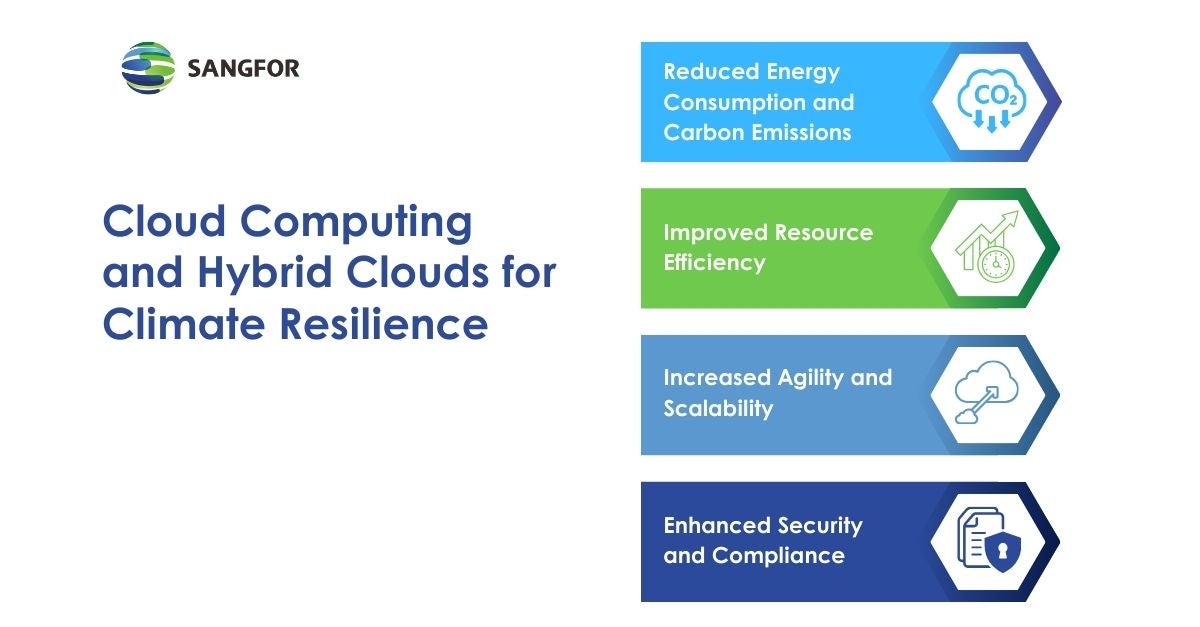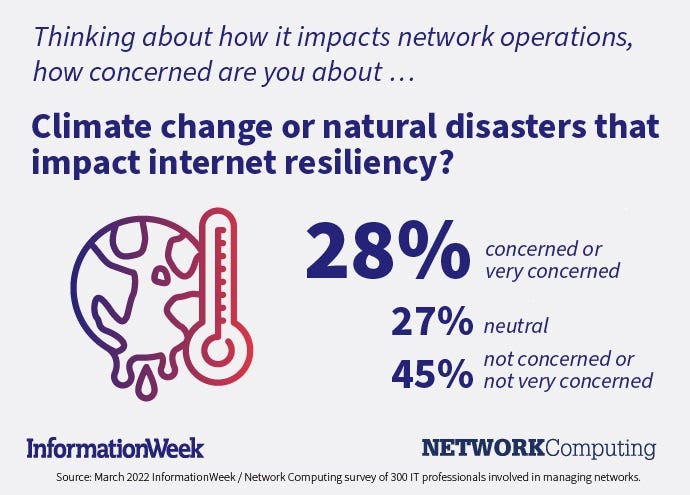Cloud computing has had a significant impact on climate monitoring and resilience. With the ability to store and process vast amounts of data, cloud computing has transformed the way climate data is collected, analyzed, and utilized. It enables scientists and organizations to easily access real-time climate data, improve forecasting accuracy, and develop effective strategies to mitigate the impacts of climate change. Cloud computing has also enhanced the resilience of climate monitoring systems by providing scalable and reliable infrastructure, ensuring continuous data collection and analysis. This technology is playing a crucial role in addressing the challenges posed by climate change.
The Impact of Cloud Computing on Climate Monitoring and Resilience is a topic of great significance in today’s world. With climate change becoming an increasingly pressing issue, the use of cloud computing has the potential to revolutionize how we monitor and respond to changes in our climate.
Cloud computing allows for the storage, analysis, and sharing of vast amounts of data, making it a powerful tool in climate monitoring. This technology enables scientists and researchers to collect and process data from various sources, such as satellites, weather stations, and sensors, in real-time. By harnessing the power of the cloud, we can gain deeper insights into the impacts of climate change, predict extreme weather events, and develop effective strategies for resilience.

The Role of Cloud Computing in Climate Monitoring
Cloud computing has revolutionized various industries, offering benefits such as scalability, flexibility, and cost-efficiency. One area where cloud computing has had a significant impact is climate monitoring. Traditional methods of climate monitoring relied on on-premises data centers and physical infrastructure, which posed several challenges, including limited storage capacity and high maintenance costs. However, with the advent of cloud computing, climate monitoring has become more efficient and effective.
Cloud computing allows for the storage and analysis of vast amounts of climate data in real-time. With the ability to process and store large datasets, climate scientists and researchers can access valuable insights to better understand climate patterns and make informed decisions. The scalability of cloud computing also ensures that climate monitoring systems can handle sudden spikes in data volume during extreme weather events or environmental crises.
Additionally, cloud computing enables collaboration among scientists and researchers from different parts of the world. By utilizing cloud-based platforms and tools, they can easily share and analyze data, fostering global cooperation in climate monitoring efforts. Cloud computing also facilitates the integration of emerging technologies, such as artificial intelligence and machine learning, in climate monitoring, allowing for more accurate predictions and models.
The power of cloud computing in climate monitoring lies in its ability to handle large-scale data, streamline processes, and promote collaboration. By leveraging cloud-based solutions, we can enhance our understanding of climate patterns, develop effective climate resilience strategies, and mitigate the impacts of climate change.
Resilience and Disaster Management in the Cloud
Climate change has increased the frequency and intensity of natural disasters, making resilience and disaster management crucial. Cloud computing plays a vital role in building resilience by providing the infrastructure and tools necessary for effective disaster response and recovery.
One key advantage of cloud computing in resilience and disaster management is its ability to ensure data security and continuity. In the event of a natural disaster or infrastructure failure, data stored on the cloud remains accessible, reducing the risk of data loss. Cloud-based backup and recovery systems enable organizations to quickly restore their operations and minimize downtime.
Cloud computing also enhances the scalability and agility of disaster management systems. During emergencies, the demand for resources and information increases exponentially. Cloud-based platforms can rapidly scale up to meet this demand, providing real-time data and analysis to support decision-making by emergency responders, government agencies, and humanitarian organizations.
The cloud’s geographic distribution and redundancy capabilities are instrumental in disaster management. Data can be replicated and stored in multiple locations, ensuring its availability even if one data center is affected by a disaster. This redundancy minimizes the risk of data loss and enables effective coordination and communication among disaster response teams.
Cloud-Based Climate Modeling and Prediction
Climate modeling and prediction are essential for understanding future climate patterns and making informed decisions to mitigate the impacts of climate change. Cloud computing offers significant advantages in this field, enabling more accurate and comprehensive climate models.
By leveraging cloud-based systems and technologies, climate scientists can access vast amounts of data to enhance the accuracy of climate models. The scalability of cloud computing allows for the processing and analysis of large datasets, contributing to more nuanced and detailed models. These models can assist policymakers, urban planners, and other stakeholders in developing strategies to minimize climate risks.
Cloud computing also facilitates real-time climate prediction, making it easier to monitor and respond to changes. By continuously analyzing new data and feeding it into predictive models, scientists can identify potential climate shifts and extreme weather events promptly. This proactive approach enhances disaster preparedness and enables more effective response and mitigation efforts.
Furthermore, cloud-based climate modeling platforms enable collaborative research between scientists and institutions across the globe. By hosting and sharing models on the cloud, researchers can benefit from collective knowledge and expertise, leading to more robust and reliable predictions. This collaborative approach is vital for addressing the complex and global nature of climate change.
Data Storage and Accessibility in the Cloud
One of the primary challenges in climate monitoring and resilience is the storage and accessibility of large amounts of data. Cloud computing provides scalable and secure storage solutions, ensuring that climate data remains accessible, protected, and available for analysis.
On-premises data centers often have limited storage capacity and are vulnerable to physical damage and data loss. By migrating climate data to the cloud, scientists and researchers can take advantage of virtually unlimited storage space. This enables long-term data retention while reducing the risk of data loss due to hardware failures or disasters.
Cloud storage also allows for efficient access to climate data from anywhere in the world. Researchers and policymakers can retrieve the required data in real-time, facilitating informed decision-making and fostering collaboration. The accessibility of climate data is particularly crucial for developing countries and regions with limited resources, allowing them to benefit from the collective knowledge and insights derived from cloud-based analytics.
Moreover, cloud-based data sharing platforms enable easy and secure collaboration among stakeholders in climate monitoring and resilience. By providing controlled access to specific datasets and analysis tools, cloud computing facilitates data-driven decision-making and strengthens the collective response to climate change challenges.
Conclusion
The impact of cloud computing on climate monitoring and resilience cannot be overstated. Cloud-based solutions have revolutionized the way we collect, store, and analyze climate data, leading to more informed decision-making and enhanced resilience. Cloud computing enables real-time climate modeling, prediction, and collaboration, promoting a global approach to climate monitoring efforts.
With the scalability, security, and accessibility of the cloud, we can overcome the challenges posed by the increasing complexity of climate change. By leveraging cloud-based technologies, we can improve our understanding of climate patterns, develop effective resilience strategies, and mitigate the impacts of climate change on our communities and the environment.
The future of climate monitoring and resilience lies in the cloud, where data-driven insights and collaboration can pave the way for a more sustainable and resilient future.

Frequently Asked Questions
Here are some commonly asked questions about the impact of cloud computing on climate monitoring and resilience.
1. How does cloud computing contribute to climate monitoring?
Cloud computing enables the collection, storage, and analysis of large amounts of climate data. By utilizing the cloud, scientists and researchers can access and process data from various sources, including satellite imagery, weather stations, and climate models. This allows for more accurate and real-time monitoring of climate patterns, such as temperature fluctuations, precipitation levels, and sea ice coverage. Cloud computing also facilitates the sharing of data and collaboration among scientists, leading to a better understanding of climate change and its impacts.
In addition, cloud computing provides the infrastructure and computational power needed for complex climate simulations and modeling. These simulations help scientists predict future climate scenarios, assess the effectiveness of mitigation strategies, and develop more resilient infrastructure and policies. Overall, cloud computing plays a crucial role in enhancing climate monitoring capabilities and supporting informed decision-making in the face of climate change.
2. What are the benefits of using cloud computing for climate resilience?
Cloud computing offers several benefits for improving climate resilience.
Firstly, it allows for the storage and backup of large amounts of climate data, ensuring its availability even in the event of physical damage or loss. This data can then be used to assess and mitigate the risks associated with extreme weather events, such as hurricanes, floods, and droughts. By analyzing historical patterns and trends, as well as real-time data, cloud-based solutions can help identify vulnerable areas, plan emergency response strategies, and allocate resources effectively.
Secondly, cloud computing enables the development of advanced early warning systems and predictive analytics. By processing and analyzing data in real-time, it is possible to detect and forecast extreme weather events with greater accuracy. This timely information can then be used to issue alerts, evacuate at-risk populations, and mobilize resources to minimize the impact of such events.
3. How does cloud computing help in climate change research?
Cloud computing revolutionizes climate change research by providing scalable computing power and storage capabilities.
Researchers can leverage cloud platforms to process vast amounts of climate data, run complex simulations, and perform sophisticated analytical tasks. This facilitates the development of more accurate climate models, which are essential for understanding the causes and effects of climate change. By analyzing data from diverse sources and utilizing machine learning algorithms, cloud-based research platforms can uncover patterns and relationships that were previously difficult to identify.
Furthermore, cloud computing enables the sharing and collaborative analysis of research findings. Scientists from different organizations and geographic locations can access and work on the same data, leading to a more comprehensive understanding of climate change and the formulation of effective strategies for mitigation and adaptation.
4. What are the challenges of using cloud computing in climate monitoring and resilience?
While cloud computing offers numerous advantages, there are challenges to consider when implementing it for climate monitoring and resilience.
One challenge is the need for reliable and high-speed internet connectivity, as a significant amount of climate data needs to be transferred to and from the cloud. In some remote or underdeveloped areas, limited internet access can hinder the efficient collection and analysis of data, limiting the effectiveness of cloud-based solutions.
Data security and privacy are also critical concerns. Climate data may contain sensitive information, and ensuring its confidentiality and protection from unauthorized access requires robust security measures. Additionally, the costs associated with storing and processing large volumes of data in the cloud can be a barrier for some organizations with limited resources.
5. How can cloud computing help in improving climate resilience in developing countries?
Cloud computing has the potential to significantly improve climate resilience in developing countries.
By utilizing cloud-based solutions, developing countries can access advanced climate data and analysis tools without investing in expensive infrastructure. This allows for better-informed decision-making, improved disaster preparedness, and the allocation of resources based on risk assessments and vulnerability maps.
Furthermore, cloud computing enables international collaboration and knowledge sharing among scientists and policymakers. Developing countries can benefit from the expertise and experience of more advanced countries, accelerating their capacity-building efforts in climate resilience.
Cloud computing has had a significant impact on climate monitoring and resilience. It allows for the collection, storage, and analysis of vast amounts of data, helping us understand and predict changes in the climate.
By using cloud-based platforms, scientists and researchers can collaborate and share data more efficiently, leading to faster and more accurate assessments. This enables us to develop timely and targeted solutions to address climate change and build resilience in vulnerable communities.


